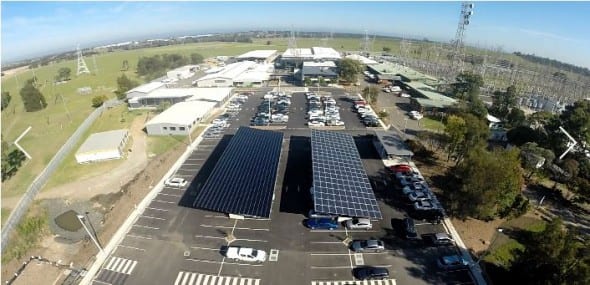NSW-based transmission group Transgrid has signaled a major push into smaller, grid-scale battery storage, saying it is looking at installing a number of 1MW-sized installations at commercial customers.
Transgrid’s Anthony England says the company is looking to partner with commercial businesses – hardware chains, supermarkets, data centres and others – “with room for a container out the back and solar PV on their roof.

The idea is to deliver savings to the commercial businesses, and to the network itself. The customers will be able to do that by balancing peak and off-peak demand, and the network by using battery storage to address network bottlenecks that would otherwise require expensive infrastructure upgrades.
“We’d like to use storage to address network capacity limits – which are only hit several times year when things get tight,” England said at the Australian Energy Storage conference last week.
England suggests that it is only the start of what might be possible – if regulations allow.
“Once we get into this space, we can take learnings from the installation, the performance and the algorithms … and start to think how to unlock larger scale applications – not just to address network capital expenditure and the opportunity to defer that spending, but also to look at some edge of grid possibilities.”
This means removing towns’ electricity needs away from the network as “primary supply”. Which is not to say that towns like Broken Hill would be taken off the grid, but the opportunity for micro-grids clearly presents itself.
Transgrid is not the only network looking to install battery storage as a means to defer network spending, and make savings for both the network operators and consumers.
Ausnet is running trials on “shared solar” and one study has already concluded that savings are about equal for households and networks. South Australia is about to launch a major trial in an Adelaide suburb, to try to measure network savings; and Western Power has numerous different trials, including the latest to use solar and storage to deflect planned network spending around the WA suburb of Mandurah.
This incursion “behind the metre” and inside homes and businesses, however, is causing concern for the retailers, who fear the networks are treading on their territory.
They are pushing strongly for the regulators to reinforce the “ring fencing” guidelines and stop the networks from entering that market.
The situation is complicated, and many feel that Australia has the “wrong” type of vertical integration. While other countries favour allowing networks to be retailer and vice-versa, and feel this is the best combination in an energy system moving to decentralized energy, Australia allows retailers to be generators, but in a system moving away from centralised energy, this may become a business conflict.
England said he would be happy to see the regulator “unlock that value chain so we can have competition on network sources. But we also get to play in retail space with customers.
“The challenge we face is our regulatory and policy arrangement. It is not keeping pace. It is not happening fast enough. The market is changing faster than we can conceive.”
England said the recent issues paper from the Australian Energy Regulator on ring fencing guidelines appeared to indicate that it thought “networks shall not compete. If we’re looking for a level playing field, that probably not a great outcome for us.”










